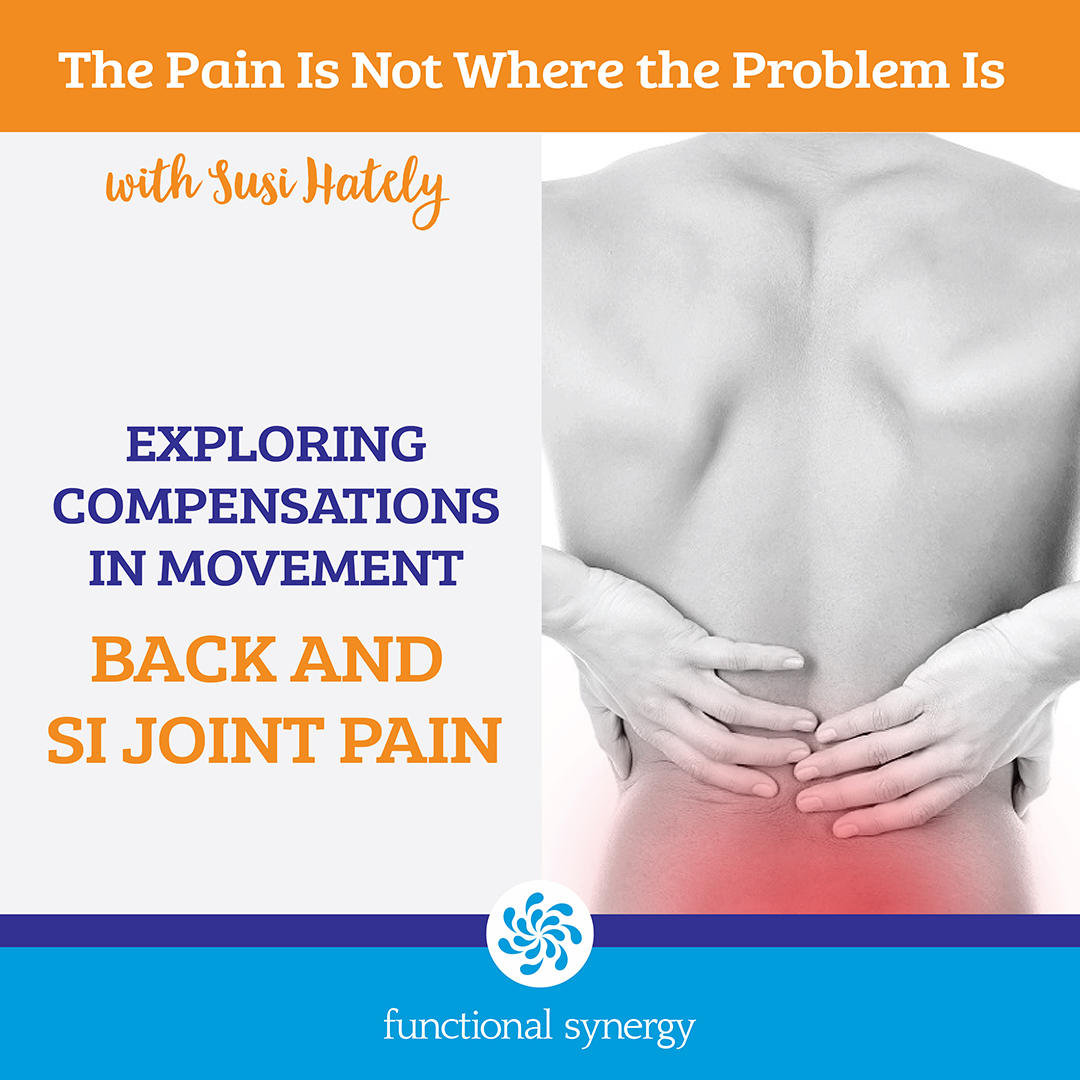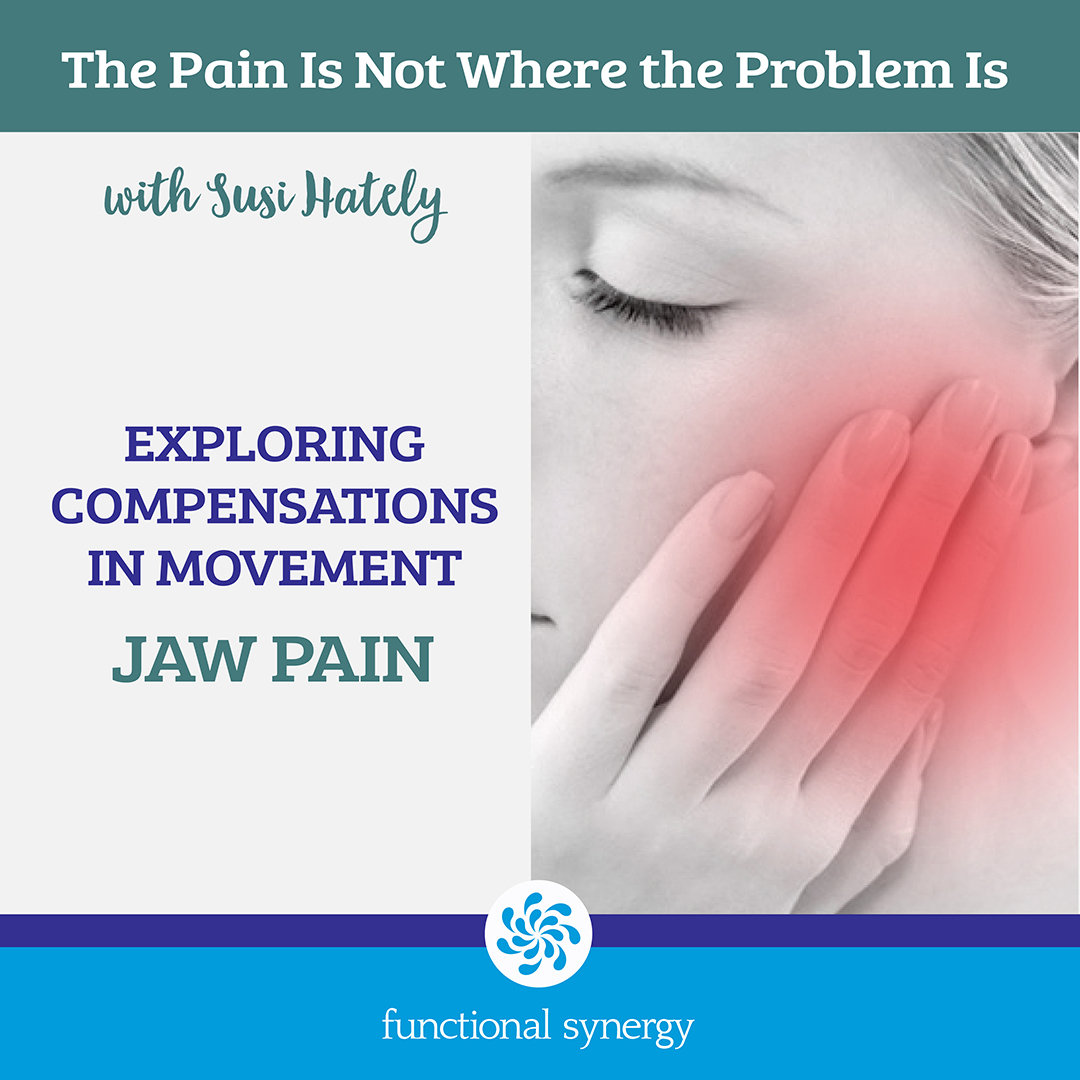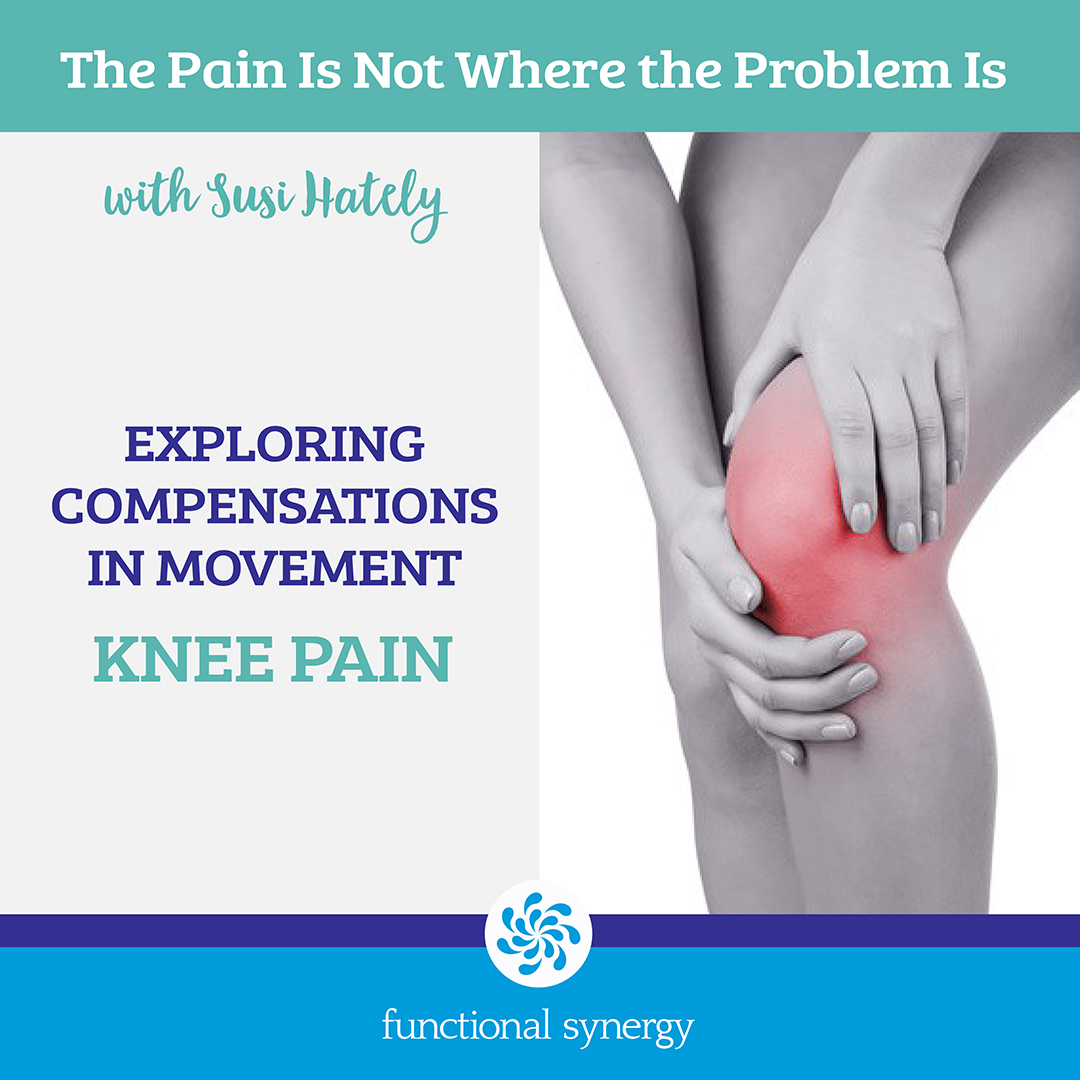Where the Pain Is, Is Not the Problem xploring Compensations in Movement
All online, all live, all interactive.
All in all, rather than seeing the pain as “the problem”, they see it as a signal, as something to listen to, and not something to be afraid of. They begin to see their body as a messenger, not as something that is working against them.
The good news is that because of what they now know, they are able to make a shift. What occurs after that shift is often incredibly profound. When individuals learn to connect with what their body is saying, they are able to intervene on their own with strategies and tools to stabilize, strengthen and build endurance.
Here is what Cathy has to say:
- “I remember the relief I had with learning that my movement patterns were just dysfunctional patterns and could change. Back then, my pain was gripping, tight, heavy, consuming. As I got out of pain I realized I was enmeshed (I think that’s the term) with it. I couldn’t separate myself from the stories about what it all meant. As I practiced being quieter and for the first time trying out movement without pain I started to see that I wasn’t the pain” ~ Cathy
And Alison:
- A big insight for me has been the miracle of attending to how we move into Asana purely and with good function, as opposed to getting into the Asana “shape” and then trying to adjust. There is such a huge difference between the two, the latter building dysfunction on top of dysfunction and the former honouring the Yoga principal of ease and steadiness in asana, and in body and mind. Also, I’ve been observing students for ages and seeing discomfort that I’ve longed to be able to help with more effectively, and now with your help, I’m finding myself saying aaahhh! So that’s why this or that is happening! – picking up those compensation patterns has been so useful. Thanks very much. ~ Alison
And Lindsay:
- When I listen to my body and ensure I am moving with as little compensation as possible, my range of motion increases and so fast. Thank you! ~ Lindsay
Here Are The Details
Dates: July 26 and 27, 2017
How It Works: Where the Pain Is, Is Not The Problem consists of 4, 1 hour Webinars that address 4 Key Areas: Back and SI Joints, Knees, Wrists and Jaw. You can register for each individually or all 4 as a bundle.
What You Get: Each 1 hour session consists of me teaching you directly, along with powerpoint slides, video and demonstration so you can actually see what I am talking about. You will learn and see key compensatory strategies related to each pain zone, and considerations for resolving the pattern. You will also receive a series of practice sessions with me walking you through yoga and movement sequences to support your practice of reducing compensatory strategies and enabling more pure movement.
Following the Program Completion: The webinar will be recorded, so you will be able to download the whole video, along with a series of yoga sequences to help you reduce compensation, and a pdf download of my Principles of Movement.
Can’t Make the Sessions? All sessions are recorded, so if you can’t make the times below, you will be able to download the material once the program completes. (We will send you a notification so you don’t have to remember to check back).
Are you concerned the information won’t be usable immediately? Here is what Melissa shares:
- I love the simplicity to your approach and how I can apply concepts right away to my private clients. It begins by getting into an authentic place with my body. That is when I see the shift. Then, when I as the teacher has the shift, so will my students because they follow my example. If I am working in pain, so will they. If I am working in ease, so will they. Thanks! ~ Melissa
Session schedule
July 26, 10 AM Mountain Time ~ Back And SI Joints: In my experience, the key compensatory areas related to back and sacroiliac joint pain are the hips and shoulders. When we can improve the mechanics of these two joint areas, a whole lot of resolution will occur. For this hour I will show you how to assess and how you can improve your function.
July 26: 130 PM Mountain Time ~ Knees: With 100% of the people I have helped recover from knee pain, or from partial and total knee replacements, or manage osteoporosis the key areas that can slow down the process are poor movement in the hips and feet. With this hour, we’ll explore why that is and what you can do to improve your odds of recovery.
July 27: 10 AM Mountain Time ~ Wrists: The wrists get a lot of press because of computer use. In truth, the wrists are taking an inappropriate amount of the load and we need to look further up the chain at the shoulder girdle, torso and spine to reconfigure how load is being transferred down the upper limb so that you can truly recover from wrist issues.
July 27: 130 Mountain Time ~ Jaw: Perhaps the most fascinating, particularly because of the crazy relationship between the jaw, abdomen, pelvis and feet. For this hour we’ll explore how nutty this all is so that you can settle the tissue of the jaw, and find ease through your head, face and neck.
Registration Details
Click this Link to Register For The Whole Program with Early Bird Discount
Early bird discount gives you all 4 webinars for the price of 3. Pay $117 rather than $156.
This offer is available until Sunday July 16 at midnight.
Do You Only Want to Register for One or Two Programs? Click On the One You Want Below:
Back and SI Joints $39

Knee Pain $39
Wrist Pain $39

Jaw Pain $39

Remember, if you want the information but can’t make the dates, that is okay, the material is downloadable once the series is complete.
Looking forward to seeing you online!
Best,
Susi

